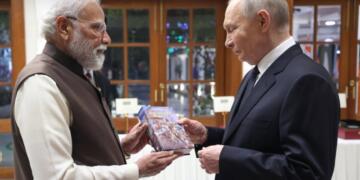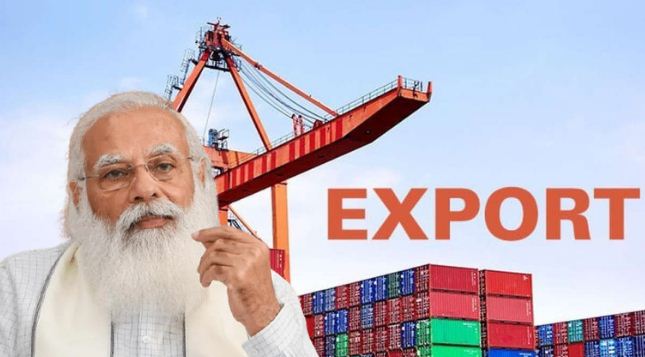- In the last one and a half years, the direction of India’s political economy is changing in many fundamental ways.
- In FY 21 (the pandemic year), India for the first time posted a positive trade balance, which means the exports were more than imports.
- The Gems and Jewellery exports, where India is among the top players in the world, picked up this year as the wealth of the ultra-rich grew manifolds.
In the last one and a half years, the direction of India’s political economy is changing in many fundamental ways. In FY 21 (the pandemic year), India for the first time posted a positive trade balance, which means the exports were more than imports. Although the country would not be able to sustain a positive trade balance in FY 22, exports are growing at a tremendous pace this year too.
In Calendar year 2021 as well as in FY 22, India is expected to achieve export worth 400 billion dollars for the first time in its history. India emerged as an agricultural export powerhouse this year and the countries around the world, including enemies like China were dependent on Indian rice to feed their populace. Moreover, IT exports, which were slowing down in the last few years, have picked up due to the post-pandemic digitalization boom.
The Gems and Jewellery exports, where India is among the top players in the world, picked up this year as the wealth of the ultra-rich grew manifolds. “This year we’ll achieve $400 billion export target, something which has never happened before in India. Talks on India-UAE Free Trade Agreement is underway,” said Union Commerce and Industry minister Piyush Goyal.
“UAE will become a gateway for Indian trade to the Middle East and Africa and we may set up a huge India mart to tap that market,” he added.
The government has taken many steps to boost exports including the RoDTEP (Remissions of Duties and Taxes on Exported Products) scheme, timely release of tax returns for exporters, and digitalization of exports data. The Union Commerce Ministry is also working on a new exports policy which will be introduced next year and is expected to be a major leap from the exports policies of the past.
“An intense review and monitoring at macro and geographical levels are helping to find new areas of trading relationships. Various measures to improve ease of doing business, incentivisation schemes like PLIs, rationalisation of duties is facilitating the trade like never before,” Commerce Secretary BVR Subrahmanyam told PTI.
India’s success comes in the backdrop of the global pandemic which had disrupted the global supply chain. China – the world’s factory dropped the towel and countries across the globe were left scrambling around in search of alternatives. Sensing a window of opportunity, the Modi government swooped in and in March last year launched the PLI scheme, and fast forward to today, the same has been extended to nearly 10 vital sectors of the economy.
The aim of a 5 trillion dollar economy by 2025 cannot be achieved without an influx of huge cheap capital in the country, and investment will come only when there is a stable government, conducive taxation environment, structural reforms in the Land and Labour sector. While the predecessors of the current government thought on the same lines, none thought of making Indian the next factory of the world or a scheme like PLI. Even the staunchest of critics of the current administration strongly believe that PLI works and not that it needs any reaffirmation from them, the results speak for themselves.
The direction of India’s political economy is set now. Sanjeev Sanyal, the Principal Economic Advisor who took the post almost five years ago in February 2022, was very clear that India needs to take the East Asian path of the investment-led export-driven economy. It took him some time to convince the colleagues in the Finance ministry but by 2019, the slow-moving bureaucrats bought the idea and two years down the line, India is looking to become the next big export powerhouse of the world.





























